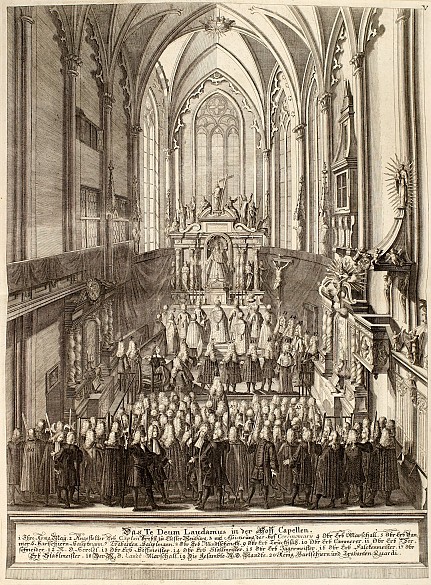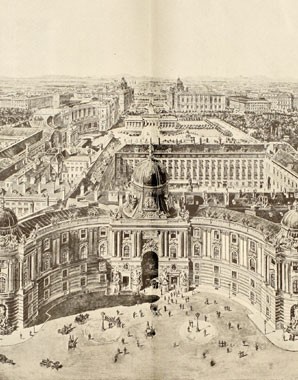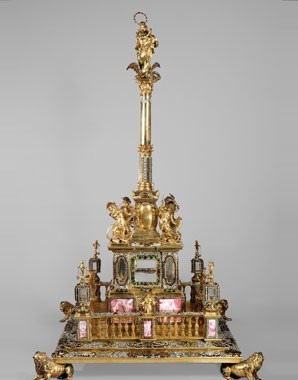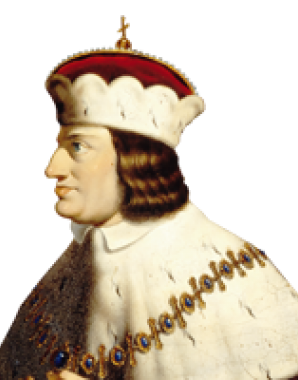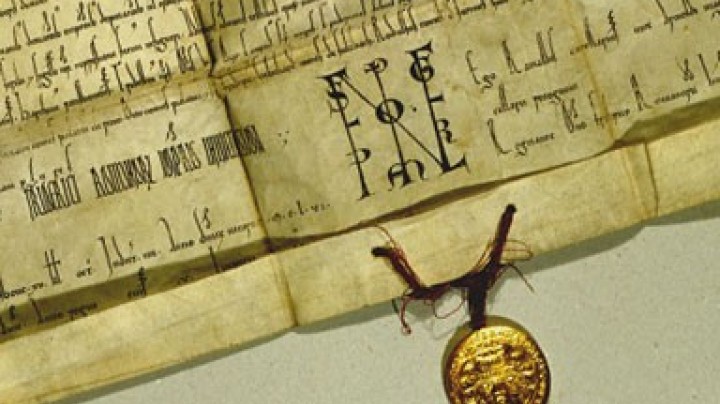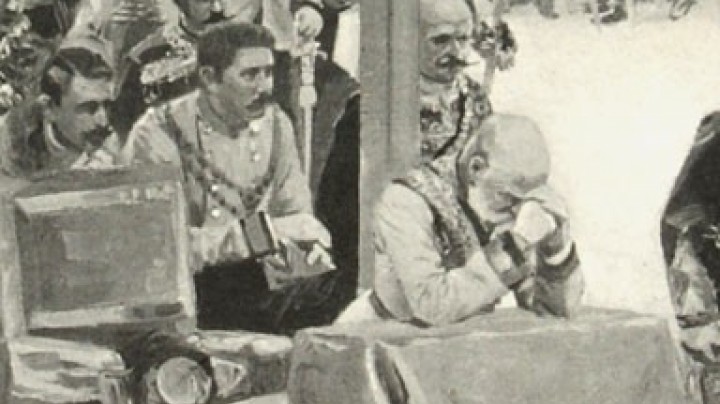The spiritual centre: the Hofburg Chapel
The medieval character of the Hofburg – otherwise disguised under later alterations – is most evident in the chapel. The chapel was indubitably the most prestigious room in the Hofburg during the Middle Ages, then for the most part an unadorned fortress.
The first mention of a chapel in the Vienna Burg was in 1296 in a Habsburg document, to wit: ‘capella nostra castri nostri Wiennensis’ (our chapel in our Viennese castle). Duke Albrecht I named himself as ‘fundator’ (founder) of the chapel in 1301. The location of this chapel has not been securely established, but it is assumed that it stood on the site of the present chapel.
In its present form the chapel dates to the fifteenth century: building was started under Albrecht V around 1424/26 and finished under Frederick III around 1450 (1449 being recorded as the date of its consecration). In later times the chapel was completely encased by buildings of the Schweizerhof, with only the apse protruding into the former moat (today a narrow inner courtyard) as the single external evidence of the chapel. Restoration work in the 1950s uncovered a richly decorated façade gable that had been concealed by later construction. The chapel therefore constituted a prestigious feature in an otherwise only modestly adorned castle building.
A description of the medieval chapel has been preserved in the treaty of partition of 1458 between Frederick, Albert and Sigmund. While the wings of the castle were divided between the signatories, the chapel and the two sacristies remained available for the use of all. This reflects the special significance of the chapel, which represented the most valuable part of the castle: valuable in the spiritual, but also in the material sense, for the sacristy – called the ‘Sagrer’ – was used as a treasury and place of safekeeping for important letters and documents, thus also as an archive.
A number of late Gothic pillar figures of various saints from the time of Frederick III has been preserved from the original Gothic interior as its most outstanding artistic feature. They were restored to their original coloration in 1977.
The chapel was subject to constant additions and alterations over the centuries, for it provided the principle setting within the Hofburg for performing acts of Habsburg devoutness and piety, which had been stylized as the principal virtues of the dynasty. The interior is dominated by the numerous oratories and galleries from where the imperial family and the Court followed the services. Its last remodelling was in the nineteenth century, in the style of the Gothic Revival.
Likewise associated with the Burgkapelle is the foundation of the Hofmusikkapelle, the Court Music, founded in 1498 by Maximilian I. The Court Music was made up of instrumentalists, singers and choirboys and was originally intended to accompany the liturgy. It had a considerable influence on the musical life of Vienna until into the eighteenth century. Although the Hofmusik was disbanded in 1918, the boys’ choir, founded exclusively for the musical accompaniment of the liturgy, was continued under private initiative as an association bearing the name of the ‘Wiener Sängerknaben’, the Vienna Boys Choir. Today it tours international concert halls with a secular repertoire, but in keeping with the original intention of its foundation it also continues to sing at Mass in the Hofburg Chapel.

